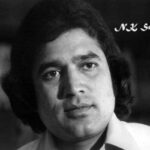Fleet owners are learning to live with what they have access to. Young nation and the talk of democratic dividend is non-stop but this “dividend” has not benefited the transport vertical because of the social stigma attached to the truck driving profession. However, it does not mean the supply has dried completely; the replacement numbers for those exiting are low
 BUSINESS MONITOR
BUSINESS MONITOR
By Ramesh Kumar
“Once my daughter is married off, I will give up driving,” or “After my son gets a decent job, goodbye to trucking.” These are some opinions that 40-plus long-haul truck drivers have been dishing out for a long time.
The haggardly, un-turbaned Sardar Bikram Singh outside the erstwhile General Motors parking yard at Halol, near Vadodara in Gujarat, convinced me on a November 2010 monsoon afternoon that “enough is enough” and that he would quit truck-driving soon. He had two little sons, who came to visit my home three years later for a luncheon get-together with his wife. Bikram was in his mid-40s then. He would invite me to his home near Manesar for the Diwali feast a year later.
I called him recently to know his whereabouts. As he picked up his phone, there was a lot of background noise from honking cars. Some crowded place he might be in, I surmised. “Sirji, I am at the airport,” he responded. No, he was not flying off to Saudi Arabia or Africa to drive trucks and earn petrodollars but waiting for passengers in his radio taxi outside the Delhi airport. Yes, he had moved away from trucking to Uber/Ola. No more long hauls and now it’s inner-city hauls in airconditioned comfort. No RTO challenges too, I reckon.
His children are in high school, and he has built his three-storeyed makaan in the land bequeathed by his mother-in-law in Chattarpur, on the outskirts of Delhi. Once upon a time, he owned a truck but switched to driving for others, he conceded, because “it was more viable”. After spending three years building the house when he was not full-time employed, he took to radio taxi recently. There was no compulsion to return to driving as he had decent savings plus a regular rental income. His argument for returning to driving was “to kill time and give space” for his wife.
Spouses need space
Several senior drivers shared Bikram’s views that their spouses needed space. Kishan Malik, another 50-plus long-haul truck driver, said: “For years, they are used to leading an independent life as we used to be away from home driving for weeks together, if not months. They were decision-makers. Wise ones. Whatever we have today is due to their diligence in money management.” One big responsibility was taken off his shoulders. His children settled down: daughter married and sons educated and employed. Malik still drives.
Anil Pandeyji, from Sultanpur, Uttar Pradesh, and settled in Nagpur, Maharashtra for a quarter-century, has not only provided for the studies of his younger siblings and married them off, but also funded his son’s graduation in electronics and saw him working for an MNC software firm in Bengaluru. He also married off his graduate daughter five years ago and proudly shared photos of himself “graduating” to the post of nana (maternal grandfather) recently. Pandeyji, again, moves steel for pan-India even today.
“I am still healthy. Good eyesight. Excellent accident-free record of 30 years. Money is good. Good employer. What more can I ask for?” he asks rhetorically.
Same trend among white-collar professionals
The senior drivers’ desire to remain glued to steering wheels sounds logical and practical. Why only long-haul truck drivers? Are we not noticing the same trend of many white-collar professionals remaining employed post-retirement, be it in the service of the government or the private sector?
Longevity of life, courtesy of medical advancement, and the advent of the nuclear family (children preferring to move out of their parental homes and lead an independent life, leaving parents to fend for themselves) are key drivers for this inclination to cling onto jobs as long as possible.
Fleet owners, too, prefer elderly drivers from their loyalty and safety perspective. Despite no formal employer-employee relationship, senior drivers’ stickiness to jobs is a boon. Indore-based fleet-owning transporter Gaurav Vyas boasts 90% of drivers in the 40-plus age category operating his fleet. Not to be ignored is that two-thirds of this 90% is 55-plus age group!
Old is gold
However, he is balanced: “A 45-year-old has gone through numerous situations on the road and have seen people much; they are mature and know what is good and bad on roads. Seniors prove well for a long-term commitment. Seniors expect higher compensation compared to the 22-year lot.”
On the other hand, the 22-year-old driver is energetic, curious, wants to travel new roads, is low maintenance, and can drive for a long. However, their situation handling is poor, and their running hours are less on vehicle and road; hence we conclude that 22-year-old knows less and is inexperienced. It’s good to have a mix of both.
“Youngsters are adventure-lovers and elders are strict rule-followers,” confesses Mohammed Islam Khan, driver counsellor at the 300-plus car carrier Sushila Transport, serving two- and four-wheel motorized vehicles from manufacturing plants to dealer points and or regional stockyards across India.
“You can be 100% assured of elders’ accident track record will be much better than the younger lot.”
Another key finding of Khan is the distraction angle. According to him, elderly drivers are not tech-savvy and avoid even taking calls while driving. The exact opposite is the youngsters’ fascination with phones. Naturally, smartphone usage is high among the young elders, and the seniors still use voice-only mobile phones. “Even if they have a smartphone, it is not put to full use,” he quipped.
What is the assessment of the 65-plus Driver Training Maestro and ex-Maruti Suzuki professional in the same domain at the 1,800-strong fleet owning R Sai Logistics? His flock of drivers comprises 60% in the 40-plus age category. Said he: “Every transport company looks for a good mix: experience and youth. This equation depends on the supply pipeline.”
Mix of experience and youth
Bhishmapitamah of driver training institutes in India and a much-sought-after transport consultant Arun Lakshman does not mince words. “The difference between new (20-25 years) and experienced (40-45 years) drivers is highly visible. When new drivers start, they are full of energy but low on experience, so they can commit mistakes. As they start gaining experience, they must be able to incorporate daily learnings into their work. By the time they reach 40-45 years, they become more responsible for all aspects of life,” he explained.
Manish Sharma, Pune-based fleet-owning transporter with a pan-India footprint, said, “Realistically, we have little choice to make as a transporter. It’s not easy to compare the drivers of different age groups. Young drivers are enthusiastic and highly self-motivated; they focus more on their monthly kilometre drive. On the other side, high experience drivers carry many of these factors with lots of experience; they desire to run the vehicles with the best fuel efficiency.”
In such a scenario, what does he attempt? “Our organization prefers experienced drivers for their sense of responsibility. They handle the vehicle with care and are generally soft-spoken. Their smart ways of dealing with people help resolve issues with fewer escalations. The younger drivers had quick learning with the GPS, smartphone, and other technology, but the experiences outsmart them with the combination of these learning and experience. Moreover, many youngsters sought advice for route selection and other vehicle information.”
Referral route of hiring
Mohan, who straddled the entire transport ecosystem – from vehicle financing to running driver training programs focused on hazardous goods movement, said: “The referral route adopted in hiring drivers is inadequate. The senior drivers who profess to teach driving in the Guru Shishya outfit would mostly share their heroic experiences. The disciple has no choice but to listen to the foibles even though he knows the tutor’s shortcomings.”
“A forty-five-year-old driver,” added Mohan, “can foretell the not so seamless journey or route whereas his counterpart with two years’ experience though adaptable to technological changes, lacks theory and compliance.”
Fleet owners are learning to live with what they have access to. Young nation and the talk of democratic dividend is non-stop. But this “dividend” has not benefited the transport vertical because of the social stigma attached to the truck driving profession. However, it does not mean the supply has dried completely. The replacement numbers for those who are exiting are low. What is the optimal size of experienced versus young? No precise numbers so far. So, the elderly will continue to be behind the steering wheels as long as their health conditions permit. Fleet owners have no choice. Period.
The Featured/Main Image by Chartviboon C. Watananun from Pixabay has been used for illustrative purposes only
Also read by the same author: Is driver shortage real? Nope! It’s not of the pandemic proportion. Don’t lose sleep, please! – THE NEWS PORTER
The author is a seasoned business and economic journalist. He can be reached at konsultramesh@gmail.com. In this column, ‘Business Monitor’, he presents a global perspective on happenings in the world of business, commerce, economics and trade. The views are the author’s own and The News Porter bears no responsibility for the same.












More Stories
When Rajesh Khanna left the shoot mid-way, told scribe, ‘I’m going for a screw’
Of the Northern Lights and an Adventure with Huskies in Swedish Lapland!
Sufiana Lived His Heart: A Daughter Reminisces